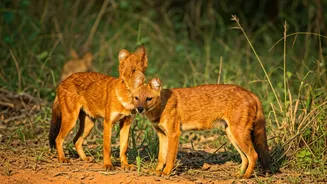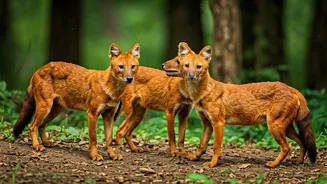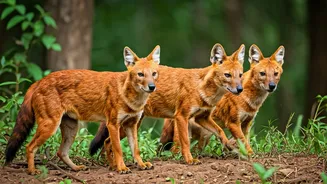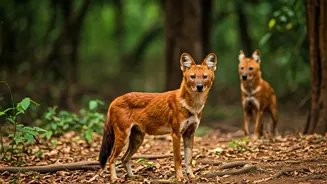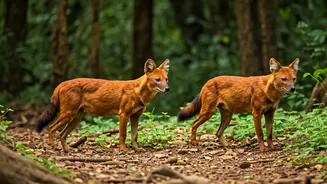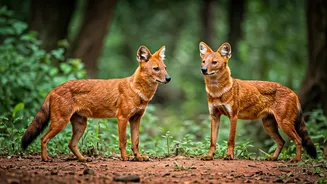Dholes: Endangered Canids
Wild dogs, scientifically called *Cuon alpinus*, also known as dholes, are among the most intriguing canids in the world. Their survival is threatened,
and their presence in India's national parks is a testament to the nation's commitment to wildlife preservation. These adaptable creatures live in packs and play a vital role in their ecosystems, hunting various prey like deer, wild pigs, and even larger animals. The populations of dholes face numerous dangers, including habitat loss, human-wildlife conflict, and disease transmission from domestic animals. Recognizing the precarious status of dholes, national parks have been crucial in providing protected habitats where these amazing dogs can live and breed safely. By exploring these parks, visitors can learn about conservation initiatives and the significance of safeguarding the dhole population.
Kanha National Park
Kanha National Park, located in Madhya Pradesh, is a haven for diverse wildlife, including a significant population of dholes. The lush sal and bamboo forests, interspersed with grasslands, provide an ideal habitat for these pack animals. Visitors to Kanha can often spot dholes hunting in packs, navigating through the varied terrain. The park has implemented successful conservation programs to protect not only dholes but also other threatened species, like tigers and leopards. Regular patrols, anti-poaching measures, and community outreach programs are central to the conservation plan. When visiting Kanha, travelers are treated to a blend of rich biodiversity, from majestic tigers to elusive dholes, all in the shelter of a thriving ecosystem. The park's success is evidence of effective conservation strategies and the significance of community involvement in preserving endangered species.
Tadoba-Andhari Tiger Reserve
Tadoba-Andhari Tiger Reserve in Maharashtra presents another excellent place to find dholes in their natural habitat. This reserve has dense forests and varied landscapes, giving dholes many opportunities for hunting and making a home. Besides, Tadoba’s conservation projects strive to create a harmonious balance between wildlife and its environment. Regular monitoring of the dhole population, combined with anti-poaching patrols, helps ensure their survival. The efforts to educate locals about the importance of wildlife conservation have also played a crucial role. This reserve delivers an exciting wildlife experience with frequent sightings of tigers and leopards, and gives visitors a unique chance to observe dholes in their natural habitat. Tadoba is a success story for conservation efforts, highlighting the significance of safeguarding biodiversity.
Bandhavgarh National Park
Bandhavgarh National Park, situated in Madhya Pradesh, is famed for its high density of tigers, but it's also a promising habitat for dholes. The park’s mixed deciduous forests and grassy meadows create a balanced ecosystem that the dholes thrive in. Bandhavgarh is involved in various conservation initiatives, including habitat preservation, research studies, and community participation. They provide a safe haven for dholes and other endangered species. It allows guests to witness not only the majesty of tigers but also the elusive dholes navigating the dense forests. The effective conservation measures, coupled with community support, highlight the park's function in preserving India's wildlife. This park displays the harmonious interaction between nature, conservation, and visitors.
Periyar National Park
Periyar National Park in Kerala provides a distinctive experience with its lush, evergreen forests and vast lakes, which contribute to the park's rich biodiversity and support a healthy population of dholes. The park’s conservation efforts focus on maintaining habitat integrity and reducing human-wildlife conflict. Through regular patrols, anti-poaching activities, and community outreach, Periyar ensures a protected environment for its diverse wildlife. Periyar provides a setting where visitors can see these creatures in their natural habitat, from herds of elephants to the elusive dholes. The park is a beacon of ecological balance and conservation success in the Western Ghats.



